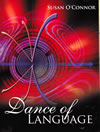Literacy: Balancing Integrated Skills
 Anyone interested in education has undoubtedly regarded the idea of literacy beyond the ability to read and write,
which in itself consists of multiple levels of ability. A number of years ago we began reading about cultural literacy
and the information our children need to know to be considered culturally literate. In an English classroom, students
at different stages of literacy simply work on progressing to a higher degree of skill with the language, which means looking at every aspect
of reading, writing, listening, speaking, all of which affect thinking. In truth, no linear progression exists where a student
climbs the language arts ladder of literacy to the top and is finished. Mastery of a language is a lifetime endeavor.
Good readers make good writers; good listeners make good thinkers; good readers-writers-listeners make good speakers,
with a bit of training in physical delivery of a speech, so that in the end all of the language arts in an English class are interrelated.
But the education of a language learner never stops.
Anyone interested in education has undoubtedly regarded the idea of literacy beyond the ability to read and write,
which in itself consists of multiple levels of ability. A number of years ago we began reading about cultural literacy
and the information our children need to know to be considered culturally literate. In an English classroom, students
at different stages of literacy simply work on progressing to a higher degree of skill with the language, which means looking at every aspect
of reading, writing, listening, speaking, all of which affect thinking. In truth, no linear progression exists where a student
climbs the language arts ladder of literacy to the top and is finished. Mastery of a language is a lifetime endeavor.
Good readers make good writers; good listeners make good thinkers; good readers-writers-listeners make good speakers,
with a bit of training in physical delivery of a speech, so that in the end all of the language arts in an English class are interrelated.
But the education of a language learner never stops.
Let us, however, go back to the beginning. Educators find solace in a sequential ordering of skills. After all, a fourth grader can’t be expected to read and write like an eighth grader or a tenth grader. Learning is developmental; readiness plays a critical role in language acquisition, but the fact remains that timing is also critical. Students must be offered the tools for acquiring language arts skills as soon as they’re ready. Therefore, I am proposing the following five key components for quality control of literacy learning:
- Grammar instruction of parts of speech and usage with focus on clauses and phrases
- Frequent reading of a variety of genres with opportunities for discussion on various levels of thinking
- Vocabulary instruction and practice to improve both reading and writing diction
- Writing instruction and practice as often as possible in various modes and purposes
- Frequent opportunities to practice conversation, discussion, and public speaking
Grammar instruction should be a daily routine that begins with simple structures and progresses over a number of months to more complex ones. In this way students can work with the understanding of grammar they are gradually acquiring to apply it to the opportunities they are receiving for writing. Practice is key; without it, students will not improve in either grammar or writing. A glance at articulate published writing offers proof that skillful use of grammar concepts can often produce eloquent writing. The following excerpt is from Annie Dillard’s Pilgrim at Tinker Creek.
"Cruelty is a mystery, and the waste of pain. But if we describe a world to compass these things, a world that is a long brute game, then we bump against another mystery: the inrush of power and light, the canary that sings on the skull" ( 9).
Let’s examine her sentence structure.
Sentence 1: Cruelty is a mystery and the waste of pain—a simple sentence but commentary follows.
Sentence 2: But if we describe a world to compass these things—an adverb clause that modifies the verb bump. To compass these things—an adverb infinitive phrase that modifies describe. A world that is a long brute game—an appositive phrase that adds information to the previous word world. Then we bump against another mystery—independent clause. The inrush of power and light, the canary that sings on the skull—two appositive phrases that add information to the word mystery.
What Dillard has accomplished is pure eloquence by employing the sophisticated use of phrases and clauses. Writers can do this when they understand how to use those empowering grammatical devices.
Offering a variety of different genres in reading over time actually encourages the ability to respond appropriately. Reading fiction, whether it is modern realistic fiction or fantasy, asks students to examine certain elements related to that genre. For example, students usually begin a study of most examples of fiction by identifying the sequential parts of a story: initial action, rising action, climax, denouement, turning points, falling action, resolution. Older students then examine the specific wants and needs of characters that motivate their behavior, which affects the climax and resolution. Even the kind of plot upon which the story is based demands a specific examination. Is the story a quest? Then the protagonist must return home a changed person who also brings back the “elixir” or boon to improve the lives of others. Reading nonfiction also requires an examination of skills specific to the purpose of the writing. A persuasive article or editorial asks the student to examine rhetorical devices and appeals from the writer that contribute to the quality of persuasiveness.
Finding the right word to communicate meaning is the writer’s main obligation, for it is in presenting ideas clearly, fluently, cohesively, and eloquently that determines overall success in the end. The book stores are full of books that want to turn us into word wizards instantly, if only we will study this or that list of words. Are they wrong? Not exactly, but once again, good readers make good writers because they assimilate words. They see how words are used in context over and over, and it is the familiarity over time that works its magic. A thesaurus helps as well. Students who want to improve their diction will work hard to discover the words that work for them, from a multitude of resources.
In 1966 Marie Clay discovered, after working with first grade nonreaders and writers in Auckland, New Zealand, that turning the curriculum into primarily a reading/writing workshop where kids were inundated with reading and writing materials daily resulted in enormous growth for these children over a one year period of time. In 1985 the study was replicated in the United States by Gay Su Pinnell, Charlotte Huck, and Martha L. King from Ohio State University with similar results. So what are the implications for older students? My experience tells me it is the same. When students are given frequent structured lessons in writing and allowed to advance through the writing process—write, revise, edit, proofread—as often as possible, their writing improves, enabling them to transfer these acquired skills to other studies as they progress to the next grade level.
 It is a known fact that most people would rather do anything than get up and speak in front of an audience.
Yet the act of preparing a speech and rehearsing it several times can actually allay much of the fear of public speaking.
Delivering a speech in a school setting is good practice for life. How many times are we called on to speak as adults—to speak
at a conference or a meeting with the boss, a presentation to colleagues, even a wedding toast. For young people especially,
the task can be frightening, but the good news is that with knowledge of and preparation for writing and delivering a speech,
giving a talk can be the opposite: a rewarding experience that alters the way others see the speaker. The first step involves preparation.
Just as a writer needs tools for composing a particular kind of piece, so does the speaker need to know the components appropriate
to the occasion. The requirements of a persuasive speech, for example, consist of appeals that will make the listener want to believe:
ethos (credibility), logos (good reasons), and pathos (emotion). A good speaker will write a speech using rhetorical devices that support
these appeals. Finally, without an effective delivery, a well written speech goes to waste. A poised speaker who looks at the audience
and can be heard can expect to receive heaps of praise. In the meantime, students in any classroom can begin to overcome stage fright
by frequent participation in discussions held each day in class.
The more opportunities students embrace to communicate orally, the less intimidating this art form will seem.
It is a known fact that most people would rather do anything than get up and speak in front of an audience.
Yet the act of preparing a speech and rehearsing it several times can actually allay much of the fear of public speaking.
Delivering a speech in a school setting is good practice for life. How many times are we called on to speak as adults—to speak
at a conference or a meeting with the boss, a presentation to colleagues, even a wedding toast. For young people especially,
the task can be frightening, but the good news is that with knowledge of and preparation for writing and delivering a speech,
giving a talk can be the opposite: a rewarding experience that alters the way others see the speaker. The first step involves preparation.
Just as a writer needs tools for composing a particular kind of piece, so does the speaker need to know the components appropriate
to the occasion. The requirements of a persuasive speech, for example, consist of appeals that will make the listener want to believe:
ethos (credibility), logos (good reasons), and pathos (emotion). A good speaker will write a speech using rhetorical devices that support
these appeals. Finally, without an effective delivery, a well written speech goes to waste. A poised speaker who looks at the audience
and can be heard can expect to receive heaps of praise. In the meantime, students in any classroom can begin to overcome stage fright
by frequent participation in discussions held each day in class.
The more opportunities students embrace to communicate orally, the less intimidating this art form will seem.
